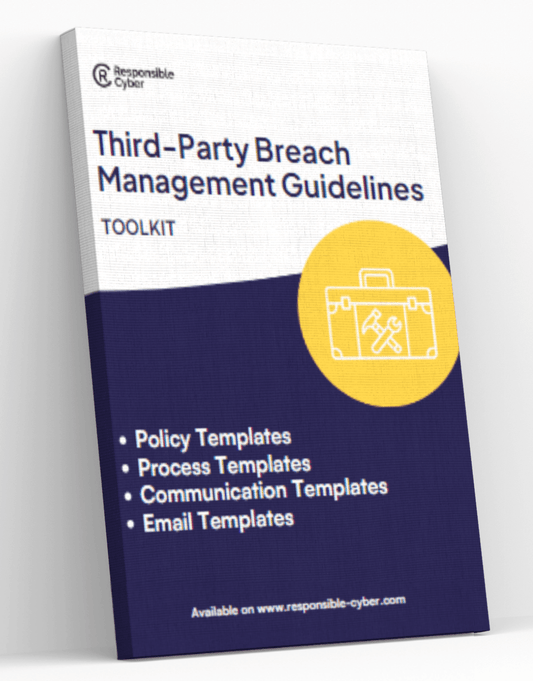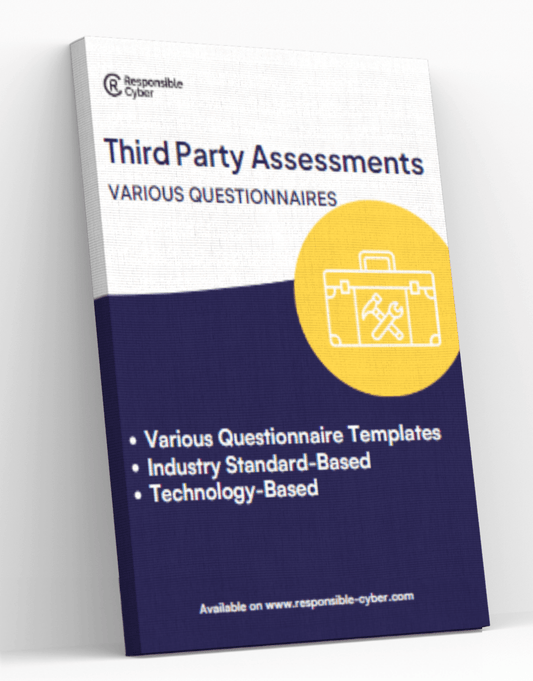Bridging the Gaps in Third-Party and Vendor Relationship Management: How RiskImmune is Leading the Charge

In today's global business landscape, the importance of robust third-party and vendor relationship management cannot be overstated. As organizations increasingly rely on external vendors and suppliers, managing the associated risks has become paramount. Several platforms have emerged to address these needs, offering a variety of features designed to enhance risk management, compliance, and operational efficiency. However, significant gaps remain in the market. This article explores these gaps and highlights how RiskImmune is effectively bridging them.
The Critical Gaps in Third-Party and Vendor Relationship Management
Despite the advancements in third-party risk management (TPRM) platforms, several key areas require further development:
1. Comprehensive Integration Capabilities
Many TPRM platforms offer integrations with popular enterprise systems, yet the seamless integration with niche or custom-built software solutions remains a challenge. Organizations using specialized tools often struggle to find platforms that can integrate seamlessly, leading to data silos and inefficient workflows.
2. User Experience and Usability
Complexity and cumbersome interfaces are common complaints among users of TPRM platforms. Simplifying user interfaces and enhancing overall usability can significantly improve platform adoption and effectiveness, particularly for smaller organizations with limited resources.
3. Scalability for Small and Medium Enterprises (SMEs)
Most TPRM solutions are designed for large enterprises, making them too expensive or complex for SMEs. There is a clear market gap for affordable, scalable solutions that can grow with smaller businesses, offering flexible pricing models and features tailored to their specific needs.
4. Real-Time Risk Monitoring
While continuous monitoring is a feature of several platforms, real-time risk assessment capabilities are still limited. In a rapidly changing business environment, the ability to monitor and respond to risks in real time is crucial. Enhancing real-time analytics and alerts would provide organizations with the agility needed to manage emerging risks effectively.
5. AI and Machine Learning Integration
Though some platforms use AI for specific functions like contract analysis or spend optimization, broader and more sophisticated AI and machine learning applications are still underutilized. There is potential for AI to drive advanced predictive analytics, automated decision-making, and dynamic risk assessment, offering deeper insights and proactive risk management.
6. Industry-Specific Customization
Many TPRM platforms offer general solutions that may not fully address the unique needs of specific industries. Developing industry-specific features and compliance modules can make these platforms more relevant and effective for diverse sectors.
7. Vendor Relationship Enhancement
Current platforms primarily focus on risk and compliance aspects but often overlook relationship-building tools. Features that facilitate better collaboration, communication, and strategic alignment between organizations and their vendors can enhance overall vendor relationships and drive mutual growth.
8. Comprehensive Risk Scoring Models
The depth and comprehensiveness of risk assessment models vary. More sophisticated, multi-dimensional risk scoring systems that incorporate a wider range of risk factors (e.g., geopolitical risks, environmental factors) can provide a more accurate and holistic view of third-party risks.
9. Regulatory Updates and Compliance Automation
Keeping up with regulatory changes is a significant challenge. Platforms need to offer automated updates to compliance requirements and more robust features for managing and demonstrating compliance with evolving regulations, including tools for audit readiness and automated reporting.
10. Mobile Accessibility and Remote Management
Increased remote work necessitates the ability to manage third-party risks via mobile devices. Enhancing mobile accessibility and ensuring that all platform features are usable on mobile devices will cater to the needs of a more distributed workforce.
RiskImmune: Bridging the Gaps
RiskImmune is emerging as a leader in addressing these gaps, providing comprehensive solutions that enhance third-party and vendor relationship management.
Comprehensive Integration Capabilities
RiskImmune offers extensive integration capabilities, allowing seamless connectivity with a wide range of enterprise systems, including niche and custom-built software. This eliminates data silos and streamlines workflows, ensuring all vendor-related information is accessible and manageable from a single platform.
Enhanced User Experience and Usability
RiskImmune focuses on user experience, providing an intuitive interface that simplifies complex risk management processes. This is particularly beneficial for SMEs, which may lack the resources for extensive training and implementation.
Scalability for SMEs
Recognizing the needs of smaller organizations, RiskImmune offers scalable solutions with flexible pricing models. This ensures that businesses of all sizes can benefit from robust TPRM without facing prohibitive costs.
Real-Time Risk Monitoring
RiskImmune incorporates real-time analytics and monitoring, enabling organizations to detect and respond to risks as they emerge. This real-time capability is crucial for maintaining agility in a dynamic business environment.
Advanced AI and Machine Learning Integration
RiskImmune leverages AI and machine learning to drive predictive analytics, automated decision-making, and dynamic risk assessments. This allows for deeper insights into potential risks and more proactive management strategies.
Industry-Specific Customization
RiskImmune offers tailored solutions for various industries, incorporating specific compliance requirements and risk factors relevant to each sector. This makes the platform highly relevant and effective for diverse business needs.
Vendor Relationship Enhancement
RiskImmune includes tools designed to enhance vendor relationships, facilitating better communication, collaboration, and strategic alignment. This focus on relationship-building helps organizations and their vendors achieve mutual growth and success.
Comprehensive Risk Scoring Models
The platform uses sophisticated, multi-dimensional risk scoring models that consider a wide range of factors, providing a more accurate and holistic view of third-party risks.
Regulatory Updates and Compliance Automation
RiskImmune provides automated updates to compliance requirements and robust tools for managing and demonstrating compliance. This includes features for audit readiness and automated reporting, ensuring organizations stay ahead of regulatory changes.
Mobile Accessibility and Remote Management
With enhanced mobile accessibility, RiskImmune ensures that all platform features are fully usable on mobile devices, catering to the needs of a more distributed workforce.
Conclusion
The landscape of third-party and vendor relationship management is evolving, with platforms like RiskImmune leading the charge in addressing existing market gaps. By offering comprehensive integration capabilities, enhancing user experience, providing scalable solutions for SMEs, and incorporating advanced AI and machine learning, RiskImmune is setting a new standard in TPRM. Its focus on real-time risk monitoring, industry-specific customization, vendor relationship enhancement, comprehensive risk scoring models, regulatory updates, and mobile accessibility ensures that organizations can manage their third-party risks more effectively and efficiently.
Frequently Asked Questions (FAQ)
1. What is third-party risk management?
Third-party risk management (TPRM) is the process of identifying, assessing, and mitigating risks associated with external vendors and suppliers to protect the organization's operations and ensure compliance.
2. Why is TPRM important?
TPRM is crucial for preventing supply chain disruptions, protecting sensitive data, ensuring regulatory compliance, and maintaining operational integrity.
3. What features should a good TPRM platform have?
A good TPRM platform should have robust risk assessment models, automated workflows, real-time monitoring, compliance tracking, and seamless integration capabilities with existing IT infrastructure.
4. How does RiskImmune address market gaps in TPRM?
RiskImmune addresses market gaps by offering comprehensive integration capabilities, enhancing user experience, providing scalable solutions for SMEs, incorporating advanced AI and machine learning, offering industry-specific customization, enhancing vendor relationships, and ensuring mobile accessibility.
5. Can RiskImmune help with regulatory compliance?
Yes, RiskImmune provides automated updates to compliance requirements and robust tools for managing and demonstrating compliance, including features for audit readiness and automated reporting.
By leveraging the capabilities of RiskImmune, organizations can effectively manage third-party risks, enhance vendor relationships, and ensure regulatory compliance in an ever-evolving business landscape.







